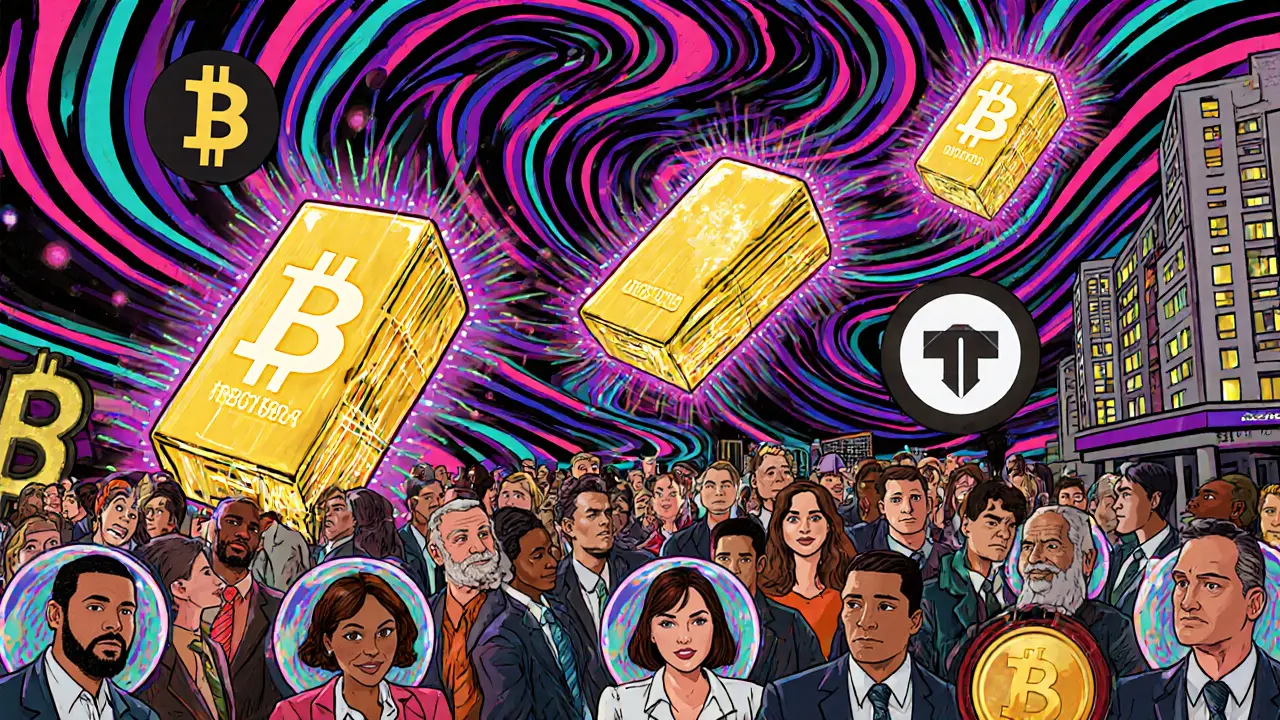Tokenized Treasuries: What They Are and Why Governments Are Betting on They
When you think of government bonds, you probably imagine paper certificates, banks, and months of paperwork. But tokenized treasuries, government debt converted into digital tokens on a blockchain. Also known as tokenized government bonds, they let investors buy fractions of U.S. Treasury bills or EU sovereign debt as if they were crypto tokens—no broker needed. This isn’t sci-fi. Countries like Switzerland and Singapore are already testing them. Even Qatar, which bans Bitcoin, lets residents invest in tokenized real-world assets like bonds and property—because it sees the value in moving traditional finance onto blockchain.
Tokenized treasuries work by slicing up traditional government debt into small, tradable units. Each token represents ownership of a share of the underlying bond. Smart contracts handle interest payments, maturity dates, and transfers automatically. That means you can buy $5 worth of a U.S. Treasury bill on a decentralized exchange, hold it in your wallet, and get paid weekly—no bank account required. This cuts out layers of intermediaries, slashes fees, and opens up government debt to everyday investors who used to need $10,000 just to get in the door.
Why does this matter? Because real-world asset tokenization, the process of turning physical or traditional financial assets into blockchain-based tokens is exploding. From farmland to art to corporate loans, everything is being digitized. But tokenized treasuries are the most trusted form—they’re backed by the full faith of sovereign nations. That’s why institutions like BlackRock and JPMorgan are building platforms for them. And regulators? They’re catching up. The EU’s MiCA regulation, the comprehensive framework governing crypto assets in the European Union now includes rules for tokenized securities, giving legal clarity to what was once a gray area.
It’s not just about convenience. Tokenized treasuries make markets more liquid. They enable 24/7 trading, fractional ownership, and instant settlement. You’re no longer stuck waiting for settlement cycles that take days. And because the blockchain records every transaction transparently, fraud becomes harder. This isn’t replacing traditional finance—it’s upgrading it.
But here’s the catch: not every tokenized bond is safe. Some projects claim to offer "tokenized treasuries" but are just打着政府债券的旗号—fake, unregulated, and risky. That’s why you need to know the difference between real tokenized assets and crypto scams. The posts below show you exactly what’s real, what’s fake, and how governments and regulators are responding—from MiCA rules in Europe to Qatar’s strict but selective approach to digital assets. You’ll see how tokenized treasuries fit into the bigger picture of crypto regulation, compliance, and real-world adoption.
RWA Tokenization Market Size: $34.86 Billion and Growing Fast in 2025
The RWA tokenization market reached $34.86 billion in October 2025, driven by institutional adoption of tokenized Treasuries, private credit, and gold. Real-world assets are being transformed into digital tokens, unlocking liquidity and fractional ownership for investors worldwide.
